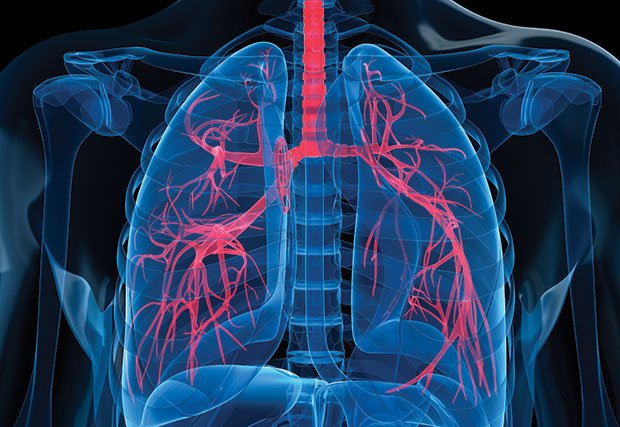GW Hospital’s Thoracic Surgery Department is the first in the nation to trial Precision VR™ by Surgical Theater — a patient specific 360° virtual reality imaging platform for patient engagement, surgical planning and intraoperative visualization.
 Much like the brain, the chest has major blood vessels and anatomy where millimeters matter when performing advanced medical procedures. To support surgical planning and patient education, the use of Precision Virtual Reality™ (VR) technology has expanded at GW Hospital from neurosurgery to thoracic conditions involving the lungs and chest. Also, the hospital has been awarded a medical education grant to study the usefulness of VR imaging as a tool for staging lung cancer, says Keith Mortman, MD, director of thoracic surgery. Staging involves assessing the extent to which cancer has spread.
Much like the brain, the chest has major blood vessels and anatomy where millimeters matter when performing advanced medical procedures. To support surgical planning and patient education, the use of Precision Virtual Reality™ (VR) technology has expanded at GW Hospital from neurosurgery to thoracic conditions involving the lungs and chest. Also, the hospital has been awarded a medical education grant to study the usefulness of VR imaging as a tool for staging lung cancer, says Keith Mortman, MD, director of thoracic surgery. Staging involves assessing the extent to which cancer has spread.
Dr. Mortman notes that the VR platform can be beneficial for treating patients who have a mass in their chest that may be next to or invading other structures. The advanced 360-degree view enables surgeons to better see where structures, vessels and airways are in relation to one another. This can help determine the best treatment and whether certain surgeries can be safely and effectively performed.
Dr. Mortman explains that surgery is not recommended for tumors that have spread to the middle part of the chest, between the lungs. VR technology can potentially help to identify if a mass has invaded that area, and thereby avoid unneeded procedures. In the event that surgery is recommended, more precise views can help direct treatment. “Sometimes it can change the approach,” Dr. Mortman says. For example, instead of going through the front of the chest, the surgeon may decide that it’s better to go through the side.
Along with the potential for improving medical care, VR capabilities also offer other advantages. Patients can put on the goggles and become an “avatar” walking through their chest, Dr. Mortman says. This can provide a new and compelling way to help patients better understand their diagnoses, and be more involved in their treatment.
Learn more about virtual reality technology at GW Hospital >

